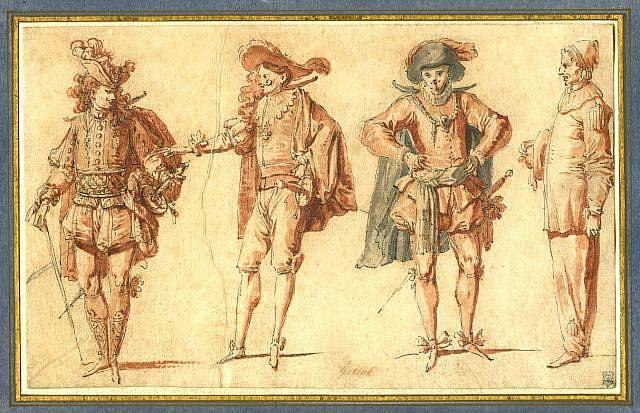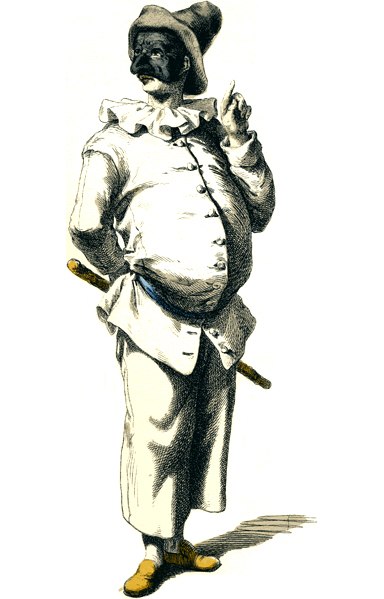Columbina is a stock character in the commedia dell'arte. She is Harlequin's mistress, a comic servant playing the tricky slave type, and wife of Pierrot. Rudlin and Crick use the Italian spelling Colombina in Commedia dell'Arte: A Handbook for Troupes.
1862 depiction of a Colombine set in 1683
Harlequin dancing with Columbine
Pierrot, Columbine and Harlequin (painting by Pierre-Antoine Quillard, c. 1733)
The cover of the newspaper Röpke Lapok by Richard Geiger featuring Pierrot and Columbine
Commedia dell'arte was an early form of professional theatre, originating from Italian theatre, that was popular throughout Europe between the 16th and 18th centuries. It was formerly called Italian comedy in English and is also known as commedia alla maschera, commedia improvviso, and commedia dell'arte all'improvviso. Characterized by masked "types", commedia was responsible for the rise of actresses such as Isabella Andreini and improvised performances based on sketches or scenarios. A commedia, such as The Tooth Puller, is both scripted and improvised. Characters' entrances and exits are scripted. A special characteristic of commedia is the lazzo, a joke or "something foolish or witty", usually well known to the performers and to some extent a scripted routine. Another characteristic of commedia is pantomime, which is mostly used by the character Arlecchino, now better known as Harlequin.
A commedia dell'arte street play during the Carnival of Venice
Commedia dell'arte Troupe on a Wagon in a Town Square by Jan Miel (1640)
Claude Gillot (1673–1722), Four Commedia dell'arte Figures: Three Gentlemen and Pierrot, c. 1715
Pulcinella, drawn by Maurice Sand








